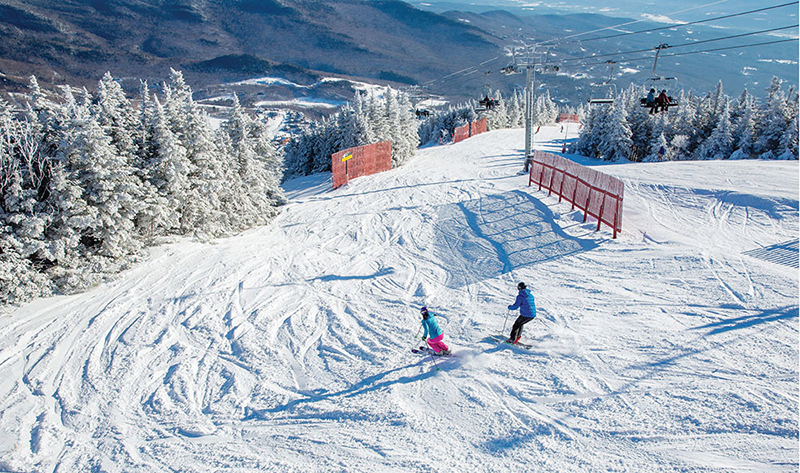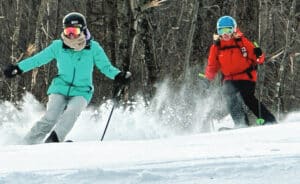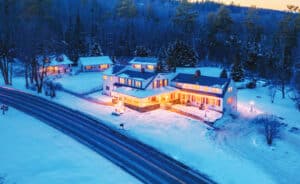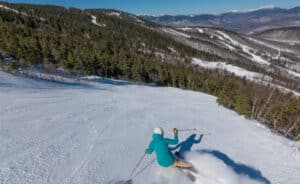
I wasn’t first in line that morning at the FourRunner Quad, but I was pretty darn close. It was a classic New England powder day at Stowe Mountain Resort with about 18 inches of fresh snow piling up in the Green Mountains overnight, all coming after the lifts had closed the afternoon before. And the day before was pretty sweet, too, a storm day that — while challenging for visibility — persistently dropped a foot-and-a-half of snow all across rugged Mount Mansfield and blanketing the valley below, where picturesque Stowe village rests.
All remnants of the storm were now gone, and the line of people magically swelled as always happens on mornings like these when you find yourself in the right place at the right time — bluebird and untouched powder awaiting us all. The energy was palpable, anticipatory legs stomping down the cold and muffled snow beneath, uncontainable whoops and hollers echoing into the air, steam rising from random cups of coffee smuggled to the scene, smiles everywhere you turned.
And finally, a chorus of cheers when the lifties finally waved the first foursome forward.
Just a few lift towers from the Octagon Café (i.e. the top), my pole straps already looped around my gloved hands, a particularly early rising tele skier bombed down Liftline (one of the resort’s legendary “Front Four” trails), bounding perfectly powerful and graceful deep powder turns that drew yelps from all above, especially when he lost control and cartwheeled end over end, emerging with a face full of snow and a grin from ear to ear.



